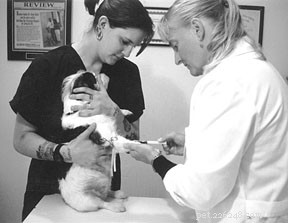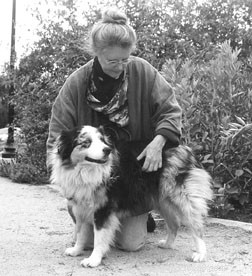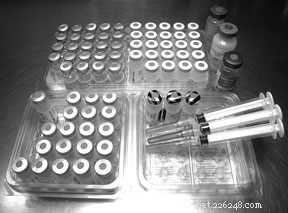
– Поддержите иммунную систему вашей собаки свежими продуктами, достаточной (не обязательно напряженной) физической нагрузкой, дневным светом и любящим, непосредственным вниманием.
– Не делайте чрезмерную вакцинацию! Используйте титровые тесты, чтобы определить, нуждается ли иммунная «память» вашей собаки в «усилении».
– Воспринимайте хронические проблемы со здоровьем вашей собаки как признак того, что вам необходимо предпринять дальнейшие шаги, чтобы сбалансировать ее иммунную систему; дополнительные методы лечения превосходны в этом отношении.
Иммунная система является «великим защитником» собаки. Иметь иммунитет (от латинского иммунис , что означает свободный или освобожденный) должен быть защищен от инфекционных заболеваний с помощью специфических или неспецифических механизмов.
Задача великого защитника — реагировать на инфекционные вызовы и антигенные стимулы из внешнего мира и реагировать на них соответствующим образом. Соответствующий иммунный ответ создаст защиту от вызовов организма, не уничтожая, в свою очередь, само животное-хозяин; этот тип ответа предполагает, что иммунная система может распознавать или отличать свое «я» от захватчика, «чужого».

Исследования иммунной системы включают ее базовую структуру и функции, а также все биологические, серологические, физические и химические аспекты иммунных явлений. Кроме того, иммунная функция участвует в иммунизации (вакцинах), трансплантации органов и переливании крови.
Функциональное тестирование иммунной системы может включать лабораторные тесты клеточных и гуморальных (относящихся к «гуморам» или жидкостям организма, особенно крови) компонентов иммунологии, а также использование реакций антиген-антитело (серология и иммунохимия). . Простые в выполнении клинические патологические тесты (например, общий анализ крови или пункционная биопсия) могут использоваться для определения текущего состояния иммунной системы животного.
Физическая часть иммунной системы собаки распространяется от субклеточного уровня до всего организма. Каждая клетка и все системы органов имеют свои компоненты иммунитета, и, в свою очередь, у каждой есть какой-то независимый внутренний регулятор. Недавние данные показывают, что эмоции животного оказывают глубокое влияние — иногда положительное, иногда отрицательное — на иммунитет животного. И даже факторы окружающей среды, такие как шумы, запахи, световые узоры и/или загрязнители окружающей среды, могут влиять на биохимию и клеточные компоненты иммунной системы.
Иммунная система широко изучалась редукционистской моделью западной науки. Однако с точки зрения целостного практикующего врача наиболее важным аспектом системы в целом является то, что каждый отдельный компонент иммунитета тесно связан. Благодаря этим соединениям все микроскопические части системы находятся в постоянной и тесной связи со всеми другими частями.
Именно это внутреннее общение становится важным при целостном подходе к здоровью собаки. В то время как западная медицина, как правило, сосредотачивается на борьбе с одним компонентом болезни, холистическая медицина пытается включить в себя все аспекты той великой защитной внутренней сети и внешнего покрова, которой является иммунная система, в конечном итоге пытаясь привести их все в равновесие. Ключевым словом здесь является «баланс» — дисбаланс в любом направлении, будь то гипоактивная или гиперактивная иммунная система, в конечном итоге приведет к болезни.
Наиболее известными компонентами иммунной системы являются те, которые находятся в кровеносной и лимфатической системах — циркулирующей иммунной системе. Лимфоциты и иммуноглобулины, как правило, являются любимыми средствами массовой информации для иммунной системы. Многие практикующие врачи пренебрегают другими, не менее важными компонентами, такими как кожа и другие барьеры тела, слизистые оболочки многих поверхностей тела, желудочно-кишечный тракт, легкие, гормональный ввод в систему и взаимосвязанную систему иммунокоммуникации.
Традиционно циркулирующую иммунную систему делят на два компонента:клеточный (прежде всего лимфоциты) и гуморальный (сложные белки, называемые иммуноглобулинами или антителами).
Клеточные компоненты этой системы кровообращения включают два типа лимфоцитарных клеток:В-клетки и Т-клетки. Одной из целей популяции лимфоцитов является распознавание антигенов. Антиген – это любое вещество, способное вызывать иммунный ответ; бактерии, вирусы и паразиты являются антигенами.
Распознав вещество как «не свое» и «не полезное для себя», лимфоциты могут непосредственно включиться в процесс уничтожения и удаления чужеродного пришельца. Или, вырабатывая антитела (иммуноглобулины), они могут активировать другие клетки, включая лейкоциты, нейтрофилы, эозинофилы и моноциты, которые делают за них грязную работу. Общее количество лейкоцитов и соотношение видов лейкоцитов, наблюдаемых в образце (наблюдаемых при общем анализе крови или общем анализе крови), могут быть полезны для определения типа присутствующего заболевания (см. «Как использовать следующий анализ крови вашей собаки», ноябрь 2003 г.).
Существует несколько классов Т-лимфоцитов:клетки-хелперы, цитотоксические клетки и клетки-супрессоры. Каждый класс действует по-своему как координатор и/или стимулятор иммунной системы. В дополнение к их действию на циркулирующие лейкоциты крови, Т-клетки также влияют на лимфатические узлы, тимус, селезенку, кишечник, миндалины, нормальную флору насекомых-«хороших парней», которые существуют в различных частях тела, и защитное покрытие слизистой оболочки, покрывающее многие ткани.
В-лимфоциты являются клетками памяти иммунной системы и в первую очередь отвечают за гуморальный иммунитет. В-клетки продуцируют белки, называемые иммуноглобулинами, которые действуют как антитела, и эти антитела взаимодействуют с антигенами, которые были введены в организм. Это взаимодействие обычно образует белковый комплекс, который можно удалить из организма.
Существует несколько классов иммуноглобулинов:IgA, IgE, IgG, IgM и IgD. Иммуноглобулины находятся в гамма-глобулиновой части сыворотки крови. Каждый класс иммуноглобулинов имеет типичную область тела, где он чаще всего обнаруживается; у каждого есть определенные антигены, с которыми он взаимодействует, и у каждого есть свой собственный способ получения удаляемого комплекса антиген/антитело.
Например, IgE активирует реакции гиперчувствительности немедленного типа, а IgA в основном связан с иммунными функциями секреторных органов. IgG — единственный класс, передающийся через плаценту, и он отвечает за материнские антитела, которые защищают щенков в течение нескольких недель после рождения.
Существуют специальные тесты, используемые для определения класса и относительного количества присутствующего иммуноглобулина. Хотя эти тесты, как правило, неспецифичны, они могут дать некоторое представление о типе текущего болезненного процесса.
В-клетки долгоживущие, возможно, столько же, сколько и вся жизнь животного. Поскольку они подвергаются воздействию антигенов на протяжении всей своей жизни, В-клетки сохраняют память об этих антигенных воздействиях, чтобы они могли реагировать на них при воздействии в более поздние сроки.
Вакцины основаны на стимуляции В-клеток, поэтому они будут закодированы памятью о специфическом антигене, содержащемся в вакцине. Идея вакцинных антигенов состоит в том, чтобы обеспечить эту память об антигене, не вызывая заболевания (мы надеемся!); эта память затем (опять же, мы надеемся!) будет стимулировать соответствующий ответ на фактическое воздействие антигена позднее.
В зависимости от состояния здоровья человека лимфоциты составляют от 20 до 40 или более процентов клеток крови, и у них также есть свой способ циркуляции по всему телу:лимфатическая система. В отличие от крови, которая перекачивается по всему телу сердцем, лимфатическая система не имеет активного насоса, и поэтому ей приходится полагаться на мышечную активность для перемещения жидкости, богатой лимфоцитами, из одной области тела в другую.
Лимфатические узлы возникают в различных точках лимфатического кровообращения организма. Они представляют собой скопления лимфоцитов и других клеток, включая макрофаги (буквально, большие пожиратели), клетки, которые убивают, поедают, перерабатывают и удаляют чужеродные вещества.
У здоровых животных лимфа движется как бесшовная река, перенося иммунную информацию из одной части тела в другую, доставляя активированные лимфоциты туда, где они необходимы, и помогая удалять скопления мусора и токсинов. Лимфа будет течь в область воспаления и способствовать возникновению там отека. Жидкая лимфа также может накапливаться и способствовать отеку всякий раз, когда животное (или нормально движущаяся часть животного) неактивно в течение длительного времени, что может привести к заметному отеку.
Даже у здорового животного некоторые лимфатические узлы достаточно велики, чтобы их можно было обнаружить при пальпации в определенных областях (особенно вдоль шеи и задних конечностей), но они также могут увеличиваться в очень заметные бугорки, когда они активно дренируют инфицированную область или при поражении опухоли – лимфосаркома, например, или другие опухоли, давшие метастазы в регионарные лимфатические узлы. Простая пункционная биопсия может помочь в определении причины увеличения лимфатических узлов.
Помимо подвижной (лимфатические узлы) и неподвижной (лимфатические узлы) сети лимфатической системы, лимфоциты составляют видную часть других частей тела. На самом деле самое большое скопление лимфоидной ткани в организме находится в кишечнике (подробнее об этом ниже).
Новичками в блоке иммунной системы являются дендритные клетки. Дендритные (разветвленные, как дерево) клетки трудно выделить, поэтому их изучение находится в зачаточном состоянии, но они могут оказаться одним из важнейших компонентов иммунной системы.
Дендритные клетки, как правило, располагаются там, где происходит максимальное взаимодействие микробов — в коже, кишечнике и легких. Их можно рассматривать как локальные наблюдательные клетки, действующие как мост между врожденным и приобретенным иммунитетом, инициируя специфические клеточные и гуморальные иммунные ответы.
Дендритные клетки используют свои ветвящиеся «конечности», чтобы нащупать местную среду на наличие вторгшихся антигенов. Они физически переносят эту антигенную информацию в локальные лимфатические узлы для обработки и последующей активации лимфоидной иммунной системы всего организма. Таким образом, дендритные клетки и лимфоидная система взаимодействуют, создавая сложную сеть связи между локально открытыми клетками и внешними отделами тела.
Дендритные клетки сохранили многие рецепторы распознавания образов древней иммунной системы и обладают уникальной способностью воспринимать стимуляцию, такую как повреждение и некроз тканей, а также бактериальные и вирусные инфекции. Эти рецепторы распознавания образов закодированы в зародышевой линии каждого животного и передаются из поколения в поколение — возможно, это одна из причин, по которой линии разведения собак наследуют иммунную способность своих родителей, как хорошую, так и плохую.
В дополнение к системе крови и лимфатической системы все системы органов так или иначе участвуют в функционировании иммунной системы, и все они также подвержены влиянию — положительному или отрицательному — способности (или неспособности) животного устанавливать соответствующий иммунный ответ. Однако есть некоторые системы органов, которые особенно активно участвуют в иммунном ответе.
• Нормальная флора. Нормальное, здоровое животное буквально кишит клопами. Говорят, что на здоровом животном и внутри него во много раз больше жуков, чем общее количество клеток во всем теле животного.

Например, каждый квадратный сантиметр здоровой (человеческой) кожи содержит от 10 000 до 100 000 жуков! And, depending on where the sample is collected, a persistent bug counter will find anywhere from 100,000 to 1,000,000,000,000 bugs in each gram of intestinal contents. These good-guy bacteria produce many biochemicals that destroy other, pathogenic bacteria.
• Skin. Everyone knows that a dog’s skin, the largest organ of his body, acts as a physical barrier. But is also contains intrinsic factors that enhance his overall immunity. We’ve already seen that skin is replete with good-guy bugs. In addition, hair follicles produce sebum, an oily substance that contains lactic acid and fatty acids, both of which inhibit growth of some pathogenic bacteria and fungi.
Too-frequent bathing or persistent use of antibiotic-type soaps can destroy the natural immune function of the skin by drying it (opening pores and minute skin cracks to invasion of bacteria), eliminating beneficial bugs, and removing the protective layers of oils and acids.
• Mucosal barriers. The inner linings of several organs – the gastrointestinal tract, lungs, urethra, and urinary bladder, as examples – are lined with a thick and tenacious layer of mucus that traps (and may kill) foreign bodies, including microorganisms.
• Gastrointestinal tract. From its beginning to its endpoint, the gastrointestinal tract is actively involved in the animal’s immune functions. Lysozymes in the saliva (and also occurring in healthy tears) can break down the walls of some bacteria. The normally acidic environment of the stomach is an effective barrier to many incoming germs. The lining of the intestinal tract is also coated with mucus, another effective way to prevent the invasion of microorganisms.
As discussed above, an extremely important component of the gut’s immune function is the presence of the normal flora, the naturally occurring bugs of the gut.
Finally, the gut is a prime source of lymphocytes, containing more of these immune cells than any other part of the body. This accumulation of lymph cells is collectively called GALT, for “gut associated lymphoid tissue.” GALT begins with the lymphoid tonsils in the throat and is further expressed by large patches of lymphoid tissues, called Peyer’s patches, that are located along many areas of the intestinal tract. The job of GALT is to recognize incoming foreign particles that may be harmful.
• Lungs. The innate and first line of defense of the lungs includes the germ-trapping mucosal lining of the inner lung walls along with tiny hairs whose ciliary action, along with sneezing and coughing, ejects living and nonliving things. Dendritic cells are also an active component of the lung’s immune system, along with a healthy population of white blood cells and immunoactive cells in the epithelial lining.
It is interesting to note that some of the immune pathways of the lungs are activated by mechanical stretching, further adding to the notion that exercise is healthy for the immune system.
• Liver. The liver is another prime site for immune function, and it is healthily supplied with lymphoid tissues as well as liver macrophages (Kupffer’s cells).
The liver is also a prime organ for processing and eliminating all sorts of toxins, and its antitoxic abilities are crucial for the health of the animal’s immune system. In light of this, it is interesting to note that the most common cause for withdrawal of drugs from the human pharmaceutical market is drug-induced liver injury (often referred to as DILI).
Drugs can be either directly toxic to liver cells, or they can adversely affect the liver’s immune function. This latter reaction may not show up until days or weeks after the beginning of drug use, and it is easy to miss the connection. According to one report, in humans DILI accounts for more than 50 percent of acute liver failure!
• Hormones. Many, if not all, of the hormones of the body have either a direct or indirect effect on the immune system. Of particular interest are the thyroid and sex hormones.
Many practitioners feel that the thyroid is the master gland of the body. The thyroid can also be easily affected by outside influences – one of interest to holistic practitioners is that vaccines and/or the preservatives in vaccines have been linked to thyroid dysfunction.
The overall capability of the immune system may also be adversely affected by sex hormones, and particularly the female sex hormones. Autoimmune problems such as diabetes, lupus, hypothyroid, and rheumatoid arthritis are much more common in females than males.
There are several ways normal immune function can be disrupted or inhibited. The following are some of the most common.
Many diseases, especially those caused by viruses, can directly attack the cells of the immune system. Or they can be more insidious and slowly infiltrate one or more components of the immune system and ultimately cause diminished effectiveness.
Stress, especially if it is prolonged and if the animal can’t avoid it, can eventually overwhelm the ability of the immune system to respond, ultimately leading to increased susceptibility to disease. However, some stress is good for the body and soul, rather like working the immune-muscles to make them stronger.
An interesting study recently demonstrated that short-term moderate stress to animals (two hours of restraint) enhanced the immune response of the skin. This response was measured to be two to four times more robust than a normal response, it occurred quicker than normal, and it remained strong for weeks to months after the stress had ended.
“We believe that in many situations of acute stress, the body prepares the immune system for challenges such as wounds or infections,” says Firdaus Dhabhar, one of the study’s coauthors. “The immune system may respond to warning signals (such as stress hormones) that the brain sends out during stress. These prepare the body to deal with the consequences of stress.”
While antibiotics can help the immune system by decreasing the numbers of pathogenic bacteria, they can also destroy much of the animal’s protective mechanisms by killing the good-guy bugs that normally inhabit the gut, the skin, and other parts of the body.
Corticosteroids may be used to inhibit a hyperactive immune process, but excessive or prolonged use may inhibit the system to the point that it is no longer functional.
Vaccines are meant to stimulate the immune system so that it will be able to mount a later attack against the specific disease the vaccine is directed against. Problems with vaccines occur when the immune stimulation is too much for the animal to handle. This may cause anaphylaxis – a rare but immediate hypersensitive reaction that can be life-threatening.
More commonly (at least in the minds of holistic practitioners), the repeated introduction of vaccine antigens, along with the presence of modified viruses shed into the environment, may provide the final insult that exceeds the immunological tolerance threshold of some individuals. These individuals may exhibit any number of immune-related diseases, including arthritis, inflammatory bowel disease, cystitis, and skin conditions.
Most holistic practitioners (including me) feel that nearly all diseases have a direct link to an imbalance of the immune system, and those that aren’t directly involved eventually have an adverse effect on the system. There are some diseases that are known for their involvement with the immune system, and these can be loosely divided into those where the system is hyperactive or where it is hypoactive.
Anaphylaxis is the term used to describe any acute, systemic manifestation of the hyperactive interaction of an antigen as it binds to an antibody. (This is also termed a Type I reaction, and it is typically the result of IgG immunoglobulins triggering a reaction with mast cells and basophils.) Possible causes include stinging and biting insects, vaccines, drugs of any kind, food substances, and blood products (transfusion from an improperly matched blood type, for example).
Clinical signs of anaphylaxis include restlessness and excitement, itch, edema, salivation, tearing, vomiting, abdominal pain, diarrhea, difficult breathing, shock, convulsions, collapse, and possibly death. Unlike other animals that typically have severe respiratory signs, the organ that is primarily affected in the dog is the liver; gastrointestinal signs rather than respiratory signs are more apt to be seen in dogs.
Anaphylactic shock and total collapse can be the result. Or more focal reactions may occur, including hives, itching, and facial swelling, especially around the eyes. Other diseases considered to be anaphylactic or Type I reactions include allergic rhinitis, chronic allergic bronchitis, allergic asthma (less common in animals than in man), food allergies, and atopic dermatitis, a chronic itchy skin disorder.
Other immune-related diseases are related to the self-production of antibodies that are toxic to various cells within the animal’s own body – a classic case of the immune system not being able to recognize “self.” The inciting agent for the self-against-self reaction is not always evident, but often appears to be related to drugs or to an oversupply of antigens from outside sources (vaccines).
The most common diseases in this category (also termed Type II reactions) include the complex of autoimmune hemolytic anemia (AIHA) and autoimmune thrombocytopenia. In general, autoimmune skin disorders fall into the various “pemphigoid” conditions.
Myasthenia gravis is a rare disease that causes extreme muscular weakness. Its symptoms are the result of autoantibodies that are directed against receptors that energize muscle activity.
Another way the immune system can run amok is by producing immune antigen/antibody complexes that are deposited in various areas of the body. These complexes interfere with normal function, and symptoms depend on the area affected. Examples of these (Type III) reactions include canine rheumatoid arthritis, systemic lupus erythematosus (SLE), and glomerulonephritis (a kidney disease).
A final category of hyperactive immune diseases (Type IV reactions) activates the cell-mediated portion of immunity. Diseases in this category include contact sensitivity, autoimmune thyroiditis, and keratitis sicca.
At the other end of the spectrum, the hypoactive immune system, there are several diseases that result in poor immune performance. The most common of these result from infection with various viruses – for example, canine distemper, parvovirus infections in dogs and cats, and AIDS in humans.
Maintaining immune health is a matter of trying to keep the whole of the system in balance with itself as well as in balance with the animal as a whole. Following are some general (and user-friendly) ways to help balance the immune system:
• Massage and exercise. The easiest and most enjoyable way to enhance your dog’s immune system is to put your hands to fur. Massage has been proven to increase lymphocyte numbers and to enhance lymphocyte function. The relaxation that comes with a good massage is good for emotional health, which has also been proven to be good for the immune system. The best part of massage is that it benefits the giver as well as the receiver; you enhance your own immune system as you help your best buddy enhance his or hers.
Exercise is another easy-to-implement activity that has proven, direct benefits for the immune system. In addition, the muscle activity helps cleanse the body of toxins and helps to move important components of immunity from one part of the body to another.

You don’t have to be overstructured about massage or exercise. Simply rub your best buddy in a way you’d like to be rubbed, and take a daily walk or romp in the park.
• Nutrition. The immune system demands good nutrition. Conversely, a diet deficit in any of the necessary nutrients will almost certainly cause immune-related disease. Specific nutrients that are indicated for immune-system health include:vitamins A (beta-carotene), C, E, and B-6; zinc; selenium; linoleic acid; and lutein.
Many of the above nutrients are high in antioxidant activity, and this may be the reason they are immune-supportive. Herbs and unprocessed vegetables are also excellent sources of antioxidant activity. It is interesting to note that recent studies have shown that the effects of antioxidants is much more profound when they come from a natural source rather than in the form of a pill or capsule.
• Травы. Some herbs demonstrate a direct immune-enhancing activity. In most cases this enhancement actually balances immune function rather than being purely stimulating. For example, when given as the ground-up parts of the entire (fresh or dried) plant, echinacea has been shown to increase lymphocyte numbers when they are abnormally low, thanks to one of several biochemicals it contains. The same plant contains another biochemical that actually decreases the lymphocytes when their numbers are abnormally high.
Many herbs, ounce for ounce, have as much or more antioxidant activity than that found in vitamins A, C, and E. Herbs can be given on a daily basis, in the form of a pinch of fresh or dried herb sprinkled over your dog’s food or a mild tea made from the herb and poured over his food.
• Alternative medicines. Acupuncture is said to enhance the flow of chi, that immeasurable energy that flows throughout the body. It is thus a balancing medicine, and as it balances all parts of the body, it likewise helps to balance and enhance immune function.
Homeopathy works by enhancing what homeopaths refer to as the vital force, again by helping to balance this immeasurable vital force throughout the body. Many homeopaths equate the vital force to the immune system; its actions are similar, if not the same, as an intact and healthy immune system.
Flower essences and aromatherapy have been shown to enhance an animal’s immune function. It is likely these two work by modulating emotions which in turn enables the mind/body connection to ease the immune system into more optimal performance.
Доктор. Рэнди Кидд получил степень DVM в Университете штата Огайо и докторскую степень в области патологии/клинической патологии в Университете штата Канзас. Бывший президент Американской холистической ветеринарной медицинской ассоциации, автор книги Руководство доктора Кидда по уходу за собаками с травами и Dr. Kidd’s Guide toHerbal Cat Care.

Защищать означает поддерживать или продвигать интересы другого. Как дрессировщик, я всегда призываю своих клиентов защищать своих собак. Для меня это означает ставить физическое и эмоциональное благополучие вашей собаки выше собственных потребностей. Это включает в себя защиту вашей собаки от травм,

После более чем года социального дистанцирования многие из нас стремятся вернуться к общению с близкими. Волнение от общения может также сопровождаться некоторой тревогой — помним ли мы вообще, как нужно общаться? Помнят ли наши собаки свои социальные навыки? Наши пандемические щенки пропустили окно